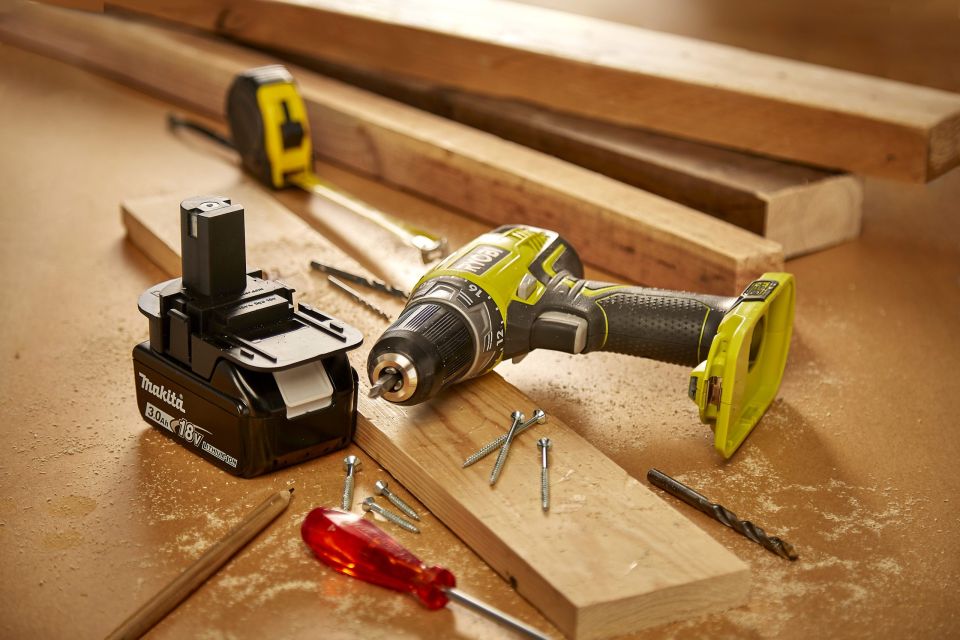YOUR CART
- No products in the cart.
Subtotal:
£0.00
BEST SELLING PRODUCTS
Free delivery on all orders to Mainland UK

An absolute necessity for any tool collection, the cordless drill is widely owned and hugely popular. Whether you’re an experienced DIY enthusiast or a complete novice who knows nothing about tools, a cordless drill is easy to use and versatile too. Let’s take a deeper look into the basics of cordless drills and what you need to know before you use one.
You might imagine that this is a one-and-done answer, but drills are more multi-purpose than you think.
A cordless drill’s main use is drilling holes into materials such as wood, plastic, PVC, plasterboard and more. They can, however, also drive screws into similar materials.
Some of the more expensive combi drills can also drill into more robust materials like mortar or concrete. We covered this in more detail in our previous blog post about the four cordless tools every homeowner should own.
Starting from the front of the drill, you have the chuck. This section holds your drill or screwdriver bits in place. It can be tightened or loosened by firmly gripping the chuck and squeezing the trigger (depending on if you have the motor in forward or reverse). Alternatively, you can manually tighten and loosen the chuck. If you tighten any drill bit using the motor in the drill, always make sure you hand tighten at the end to ensure it’s secure and straight. Due to the way the chuck clamps onto the bit, they are compatible with both regular drill bits as well as hex-shaped bits that are more commonly used on impact drivers.
Behind the chuck is the adjustable clutch. This section is numbered, and represents the torque setting for the tool. Adjustable torque settings prevent you from overdriving screws. All drills also have a regular drill setting on the clutch, which has no torque restriction.
The switch on the top of the drill represents the speed settings. Most drills will have two settings, but some higher-end drills will have three. The lower numbers represent slower speeds but higher torque, which is needed for driving screws. You can use the higher speed settings for less demanding tasks, such as drilling pilot holes in wood or PVC.
Finally, you have the trigger. Drill triggers are pressure-sensitive, meaning the more you squeeze them, the faster the chuck spins.
Some of the more powerful drills, including hammer drills and combi drills, will come with an auxiliary handle that’s attached just behind the chuck. This offers the user more stability and control when drilling into concrete and brick.
Your drill bit will depend on two key elements. The material you’re drilling into and how clean you need the cut to be.
The most common drill bits are the multi-purpose bits. As the name suggests, they are designed to drill into a variety of materials but work best on metal and acrylic. Whilst they can also drill into wood, they tend to build up wood shavings in the flutes, meaning you need to frequently pull the bit out of the hole you’re drilling to remove the waste. For this reason, auger bits are the more appropriate choice for wood drilling.
For any kind of brick or mortar, you’ll need a masonry bit. Their tips are made with a reinforced metal such as tungsten, making them more resilient to the dense stone.
If you’re drilling larger holes, your two main choices are spade bits and Forstner bits. Spade bits will very efficiently drill larger holes in timber, but tend to leave a rough edge around the cut. Forstner bits will similarly cut into most wood and timber without leaving a rough edge (which is why they are used in many woodworking and piping applications).
Ryobi has recently expanded its One+ drill range to include the latest versions of brushless drill drivers, combi drills, and angled drills. When compared to the likes of DeWalt and Makita, they offer a lot more value for money.
So If you’re looking to expand your tool collection outside of your preferred brand, consider buying a Badaptor to save on the cost of a new battery system. Badaptors convert 18V batteries from DeWalt, Makita, Milwaukee, Bosch Professional, Ridgid and AEG to work with the entire range of Ryobi One+ tools.
Visit our website at badaptor.com to buy yours today.
Sign up for our newsletter to receive product news.
Leave a Reply